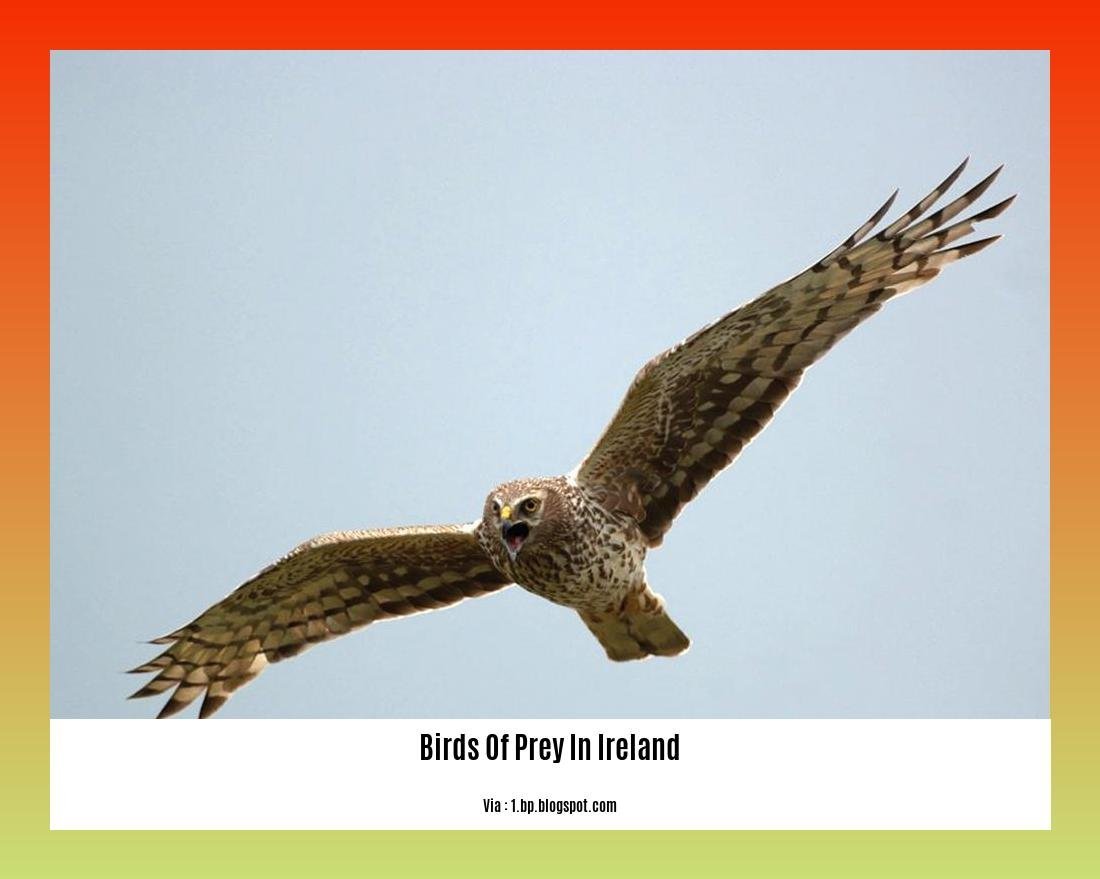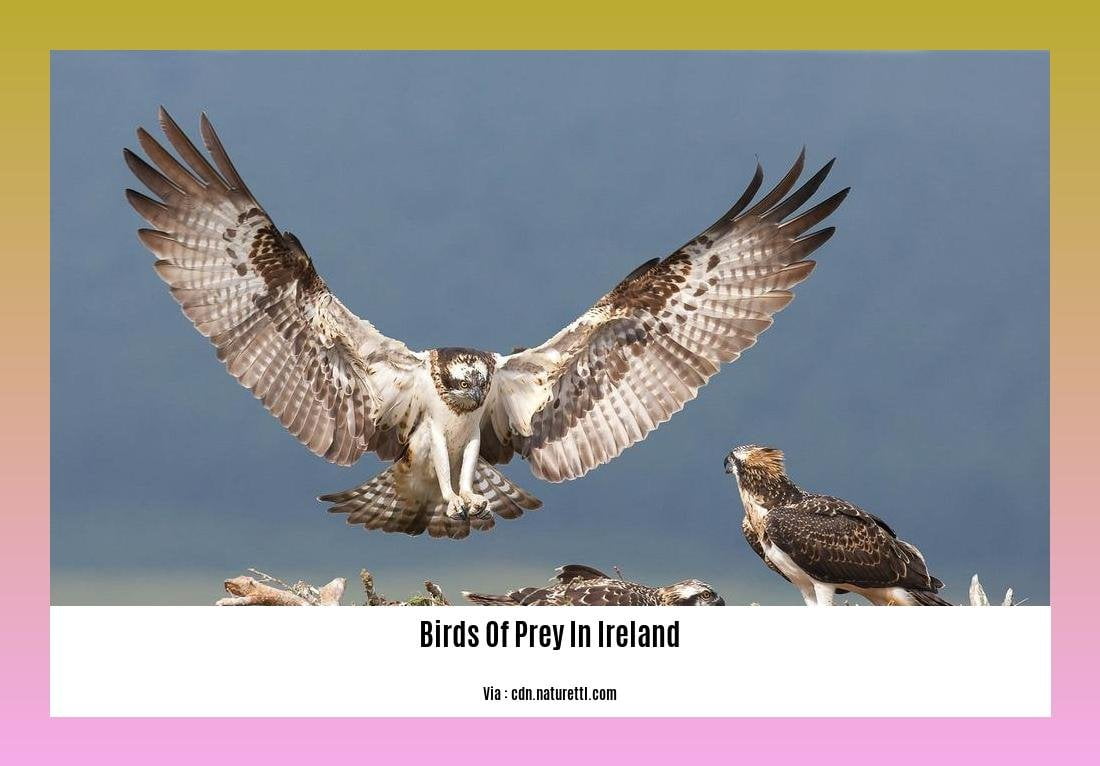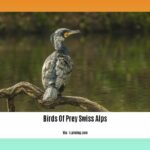Birds of Prey in Ireland: An In-Depth Exploration of Ireland’s Majestic Raptor Population
Ireland’s remarkable landscape is home to a diverse and captivating array of birds of prey, also known as raptors. From the majestic elegance of the white-tailed eagle to the fierce hunting prowess of the peregrine falcon, these majestic creatures play a vital role in Ireland’s ecological balance. In this comprehensive article, we delve into the captivating world of Ireland’s raptor population, exploring their unique characteristics, their critical significance to the ecosystem, and the challenges they face in a rapidly changing environment. Join us as we unravel the mysteries surrounding these awe-inspiring birds and discover the compelling story of their survival.
Key Takeaways:
- The most commonly seen birds of prey in Ireland include the Peregrine Falcon, Kestrel, Merlin, Sparrowhawk, and Hen Harrier.
- The Peregrine Falcon holds the record for being the fastest bird in the world, known for its diving speed.
- Other birds of prey found in Ireland include the Barn Owl, Buzzard, Golden Eagle, Osprey, and White-tailed Eagle.
Birds of Prey in Ireland


Birds of prey play a vital role in Ireland’s ecosystem, and the country is home to a diverse range of these majestic creatures. From the impressive Peregrine Falcon to the elegant Barn Owl, Ireland offers a rich habitat for these fascinating raptors. In this article, we will delve into the world of birds of prey in Ireland, exploring their species, habitats, behaviors, and conservation efforts.
Peregrine Falcon – The Speed Demon of the Skies
Let’s begin with the Peregrine Falcon, a true icon among birds of prey. This remarkable species is renowned for its incredible speed, holding the title of the fastest bird in the world. With astonishing precision and agility, the Peregrine Falcon can reach speeds of over 240 miles per hour when diving, called stooping. Found in various habitats across Ireland, including coastal cliffs and upland areas, the Peregrine Falcon symbolizes power and grace.
Kestrel, Merlin, Sparrowhawk, and Hen Harrier – The Aerial Hunters
Other commonly seen birds of prey in Ireland include the Kestrel, Merlin, Sparrowhawk, and Hen Harrier. Each of these species has unique adaptations and hunting techniques that make them efficient aerial hunters.
The Kestrel can often be spotted hovering over open grasslands, scanning the ground for its next meal of small mammals or insects. With its keen eyesight and ability to hover in mid-air, it showcases remarkable precision and patience.
The Merlin, on the other hand, is a relatively small raptor known for its swift flight and agile hunting skills. It prefers open moorlands and coastal areas, hunting small birds with impressive speed and agility.
The Sparrowhawk, with its short wings and long tail, is built for maneuverability in dense woodland habitats. This bird of prey relies on surprise attacks and quick flights to capture small birds.
The Hen Harrier, with its distinct white rump patch, is a symbol of conservation success in Ireland. After facing decline, conservation efforts have helped this species make a gradual comeback. It mainly inhabits open heather moorlands and preys on small mammals and birds.
Barn Owl, Buzzard, Golden Eagle, Osprey, and White-tailed Eagle – The Enchanting Guardians of the Skies
Moving on to some of the less commonly seen but equally enchanting birds of prey in Ireland, we have the Barn Owl, Buzzard, Golden Eagle, Osprey, and White-tailed Eagle.
The Barn Owl, with its mesmerizing ghostly appearance, is a nocturnal hunter that can be found nesting in old buildings and trees. As an indicator of the health of the environment, the presence of Barn Owls signifies thriving biodiversity.
The Buzzard, a medium-sized raptor, is known for its soaring flight and distinctive mewing call. It inhabits a range of habitats, including woodlands, moorlands, and farmlands, and feeds mostly on small mammals.
The majestic Golden Eagle, once on the brink of extinction in Ireland, is a true symbol of conservation success. With its broad wings and soaring flights, it epitomizes the wild beauty of the Irish countryside.
The Osprey, fondly known as the “fish hawk,” can be seen near freshwater lakes and rivers, diving into the water to catch fish. Its incredible fishing skills and distinctive markings make it a remarkable sight in Ireland’s wetland habitats.
Lastly, we have the White-tailed Eagle, a magnificent bird of prey that has been successfully reintroduced to Ireland. With its impressive wingspan and powerful beak, it thrives along the country’s coastal regions and adds to the unique avian diversity of Ireland.
Conservation Efforts – Protecting Ireland’s Raptors
While Ireland boasts a magnificent array of birds of prey, many of these species face various conservation challenges. Loss of suitable habitats, illegal persecution, and factors such as climate change pose threats to their survival. That is why dedicated conservation efforts play a crucial role in protecting Ireland’s raptor populations.
Conservation organizations, researchers, and bird enthusiasts collaborate to monitor populations, study behavior, and implement measures to safeguard these majestic creatures and their habitats. By raising awareness about the importance of birds of prey and advocating for their conservation, we can ensure a sustainable future for Ireland’s avian treasures.
In conclusion, Ireland’s birds of prey are not only awe-inspiring but also integral to the country’s ecosystem. From the Peregrine Falcon’s breathtaking speed to the elusive Barn Owl’s nocturnal beauty, these raptors offer a glimpse into the rich biodiversity of Ireland. By understanding and appreciating their importance, we can actively contribute to their conservation and help protect these majestic creatures for generations to come.
Table: Birds of Prey in Ireland
| Species | Habitat | Natural Prey |
|---|---|---|
| Peregrine Falcon | Coastal cliffs, upland areas | Birds, small mammals |
| Kestrel | Open grasslands | Small mammals, insects |
| Merlin | Open moorlands, coastal areas | Small birds, insects |
| Sparrowhawk | Woodlands | Small birds |
| Hen Harrier | Heather moorlands | Small mammals, birds |
| Barn Owl | Old buildings, trees | Small mammals, birds |
| Buzzard | Woodlands, moorlands, farmlands | Small mammals |
| Golden Eagle | Upland areas, countryside | Medium-sized mammals, birds |
| Osprey | Freshwater lakes, rivers | Fish |
| White-tailed Eagle | Coastal regions | Fish, waterfowl, small mammals |
Remember, birds of prey in Ireland encompass a remarkable variety of species, each with its unique characteristics and ecological importance. By understanding their habitats, behaviors, and conservation needs, we can actively contribute to their protection. So, let’s appreciate and safeguard these remarkable creatures that grace the Irish skies.
Birds of prey are abundant in Northern Ireland, offering a breathtaking sight in their natural habitat. If you want to explore these majestic creatures up close, check out our comprehensive guide on birds of prey in Northern Ireland.
Challenges for Birds of Prey
Ireland is home to a diverse array of bird species, including an impressive population of birds of prey. While these majestic creatures inspire awe and fascination, they also face several significant challenges that threaten their existence and habitat. Understanding these challenges is crucial for implementing effective conservation strategies and ensuring a sustainable future for Ireland’s raptor population.
Habitat Loss and Fragmentation
One of the major challenges for birds of prey in Ireland is habitat loss and fragmentation. As human development expands and landscapes are modified, the natural habitats of these birds are being destroyed or degraded. Urbanization, agriculture, and infrastructure projects all contribute to the loss of suitable nesting sites, hunting grounds, and breeding areas. This loss of habitat affects their ability to find food, reproduce, and maintain healthy populations.
Illegal Wildlife Crime
Illegal wildlife crime, including persecution and poisoning, poses a significant threat to birds of prey in Ireland. These birds often fall victim to intentional killing, either due to misconceptions about their impacts on game birds or from individuals who see them as competition. Poisoning is a particularly heinous crime, with poisoned baits targeting rodents also endangering birds of prey that consume these contaminated prey items. The use of rodenticides, which are often used without regulation or control, further exacerbates this issue.
Climate Change
Climate change is another pressing challenge for birds of prey in Ireland. As temperatures rise and weather patterns shift, these birds must adapt to changing environmental conditions. Changes in prey availability, altered migration patterns, and disruptions to their breeding cycles all have implications for their survival and reproduction. Species with specific habitat requirements, such as the Golden Eagle, are particularly vulnerable to the impacts of climate change.
Human Disturbance
Human disturbance can disrupt the natural behaviors and breeding success of birds of prey. Recreational activities, such as hiking, climbing, and birdwatching, can cause stress and disturbance, leading to abandoned nests and failed breeding attempts. It is crucial for visitors to protected areas to follow guidelines and respect the boundaries established for the conservation of these magnificent birds.
Collaboration and Conservation Efforts
Addressing these challenges requires a collaborative approach involving government agencies, conservation organizations, researchers, and the public. Efforts such as habitat restoration, public awareness campaigns, enhanced law enforcement, and the implementation of sustainable land management practices can all contribute to the conservation and protection of birds of prey in Ireland.
Key Takeaways:
– Habitat loss and fragmentation pose significant challenges for birds of prey in Ireland, affecting their ability to find suitable nesting sites and hunting grounds.
– Illegal wildlife crime, including persecution and poisoning, threatens the existence of these birds, highlighting the need for stronger regulation and enforcement.
– Climate change impacts migration patterns, prey availability, and breeding cycles, making adaptation crucial for the survival of birds of prey.
– Human disturbance through recreational activities can disrupt the natural behaviors and breeding success of these birds, necessitating guidelines and boundaries to protect their habitats.
– Collaboration between government agencies, conservation organizations, researchers, and the public is essential for implementing effective conservation strategies and ensuring the long-term survival of birds of prey in Ireland.
Sources:
– “Birds of Prey in Ireland: The Complete Guide” – Let’s Go Ireland
– “Protecting Ireland’s Endangered Birds of Prey” – Esri
FAQ
Q1: What are some of the common birds of prey found in Ireland?
A1: The most commonly seen birds of prey in Ireland include the Peregrine Falcon, Kestrel, Merlin, Sparrowhawk, and Hen Harrier.
Q2: What makes the Peregrine Falcon unique among birds of prey in Ireland?
A2: The Peregrine Falcon is known for its hunting stealth and holds the record title of being the fastest bird in the world for diving, also known as stooping.
Q3: Are there any endangered birds of prey in Ireland?
A3: Yes, the Golden Eagle is currently an endangered species in Ireland. Conservation efforts are being undertaken to protect and save this precious bird.
Q4: What are some measures being taken to conserve birds of prey in Ireland?
A4: Conservation organizations, such as the Golden Eagle Trust, are working tirelessly to protect endangered species and reintroduce locally extinct birds of prey. Additionally, initiatives like the Barn Owl Project aim to raise awareness about potential dangers facing birds of prey, such as the use of rodenticide.
Q5: How does climate change affect birds of prey in Ireland?
A5: Birds of prey in Ireland are not immune to the impacts of climate change. Additionally, the use of rodenticide, a poison used to control rodents, poses a threat to these birds as there is currently no regulation on its use in Ireland. Efforts are being made to address these issues and create a safer environment for birds of prey to thrive.
















